Swedish Disruptor Shakes Up Asia’s Paint Industry
A bold, eco-conscious brand is drawing in a new generation of consumers
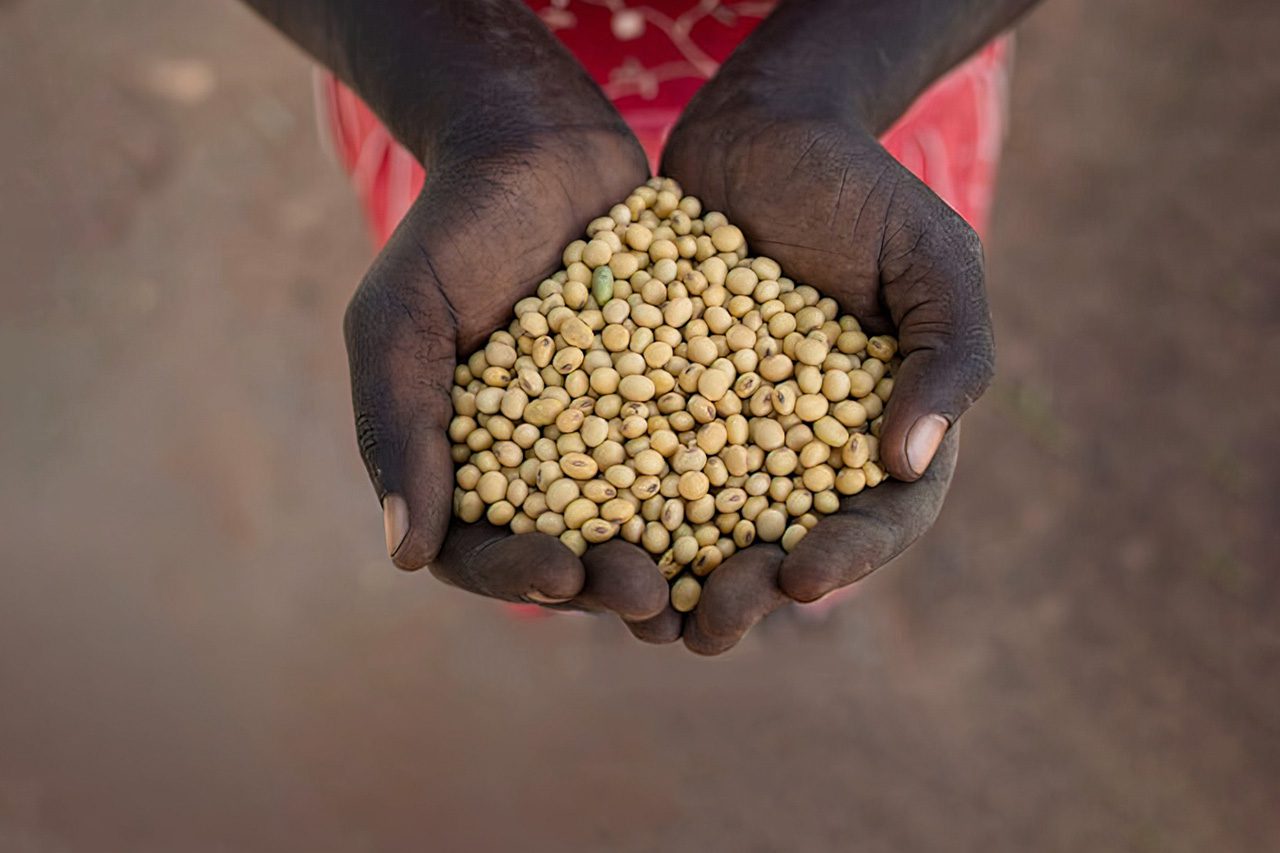
“I am now able to support the school-going children, in the past I could not even afford a notebook for a child to use in class. I could say that I was poor because sometimes my family could go without meals, but now things have changed a lot.” — Zione Charles, a single mother supporting 5 children and soyfoods entrepreneur from Chombakata village in Malawi.
What does a women-empowered, locally profitable solution to chronic malnutrition look like? It provides affordable, protein-rich food for sale within communities with high malnutrition rates, while providing livelihoods to women and youth entrepreneurs. Local produce would be used, providing a climate-friendly, plant-based solution while increasing incomes to local smallholder farmers. Issues of poverty, malnutrition, gender equity, and climate are interrelated; cross-sectoral solutions, such as the one described here, are more effective in benefiting communities than ‘single-issue’ projects.
The prevalence of chronic malnutrition has increased substantially during the pandemic period, but had also been stagnating or even worsening during the past 10 years. The death rate from malnutrition is about 5M per year, including about 3M children (2019 statistics); these rates will likely have increased with the recent rise in malnutrition.
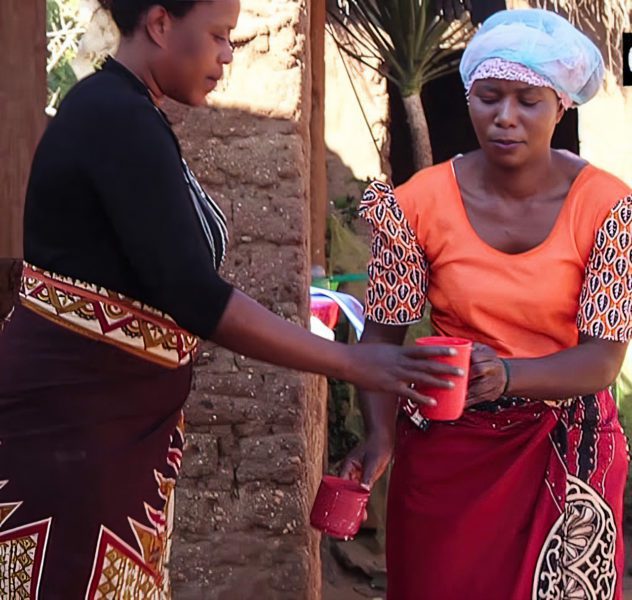
Zione Charles, a rural woman entrepreneur, seen on the right, selling a cup of freshly-made soymilk to a customer in Malawi; Photo Credit Malnutrition Matters, 2019
Unfortunately, the dramatic improvements in under-nutrition rates from 1990 to 2010 came to an abrupt halt in 2010. This shows us that the approaches used to improve nutrition (primarily humanitarian food aid and private-sector food processing/distribution) had reached the limit of their usefulness and geographic penetration. Remote communities continue to suffer chronic malnutrition as lack of infrastructure (roads and electricity) makes the cost of any processed and packaged foods, which require transportation, prohibitively high.
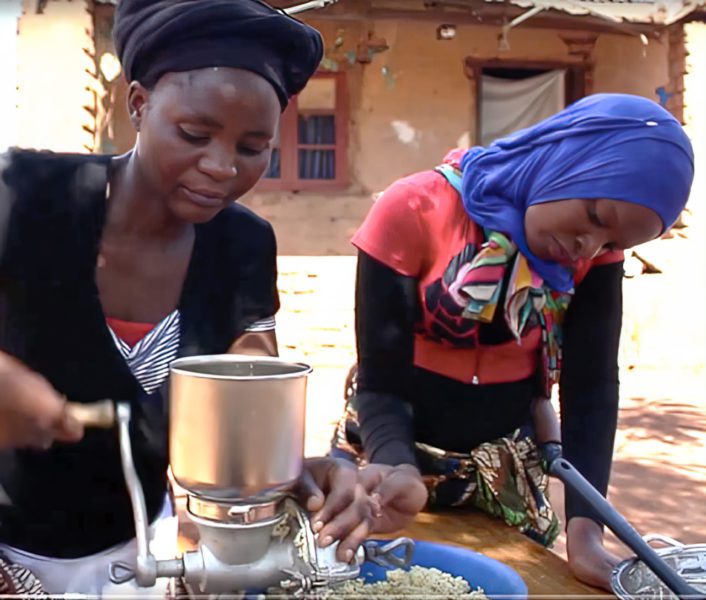
Promise Silesi and helper grinding soaked soybeans in Chiuzila, Malawi; Photo Credit Palladium Int’l- 2019
To continue lowering rates of under-nutrition, hyper-local processing is needed to make affordable nutrient-dense food available within every neighbourhood, while benefiting local women entrepreneurs to improve local economic and social conditions. Presently, the employment and livelihood opportunities for women are quite limited. Most are farming and/or reselling various goods, where the typical income is less than $1 a day, or they are unemployed. The aim of sustainable projects should be to enable an income of $2.50 per day or more, for less than 6 hours of work (proportionally more if the entrepreneur has the time available). This would see a typical increase of 100 to 200% for single heads of household, or 50 to 100% in a dual earner household. Malnutrition Matters meets this goal in the overwhelming majority of cases by using their SoyaKit technology and related training and support services, which is why the entrepreneurs continue their soyfoods enterprises for many years.
One of the most crucial deficiencies in diet that causes disease, incomplete development, and death is protein deficiency, mainly due to the high cost of many protein-rich foods, especially animal-based foods such as eggs, dairy milk, and meat. The most affordable of these, eggs and dairy milk, typically cost between two and three cents per gram of protein (recent data from rural areas in Kenya, Ghana, Malawi, DR Congo). For those earning $2 per day or less, who are the majority of those living in communities with high rates of malnutrition, these prices are not affordable for daily consumption.
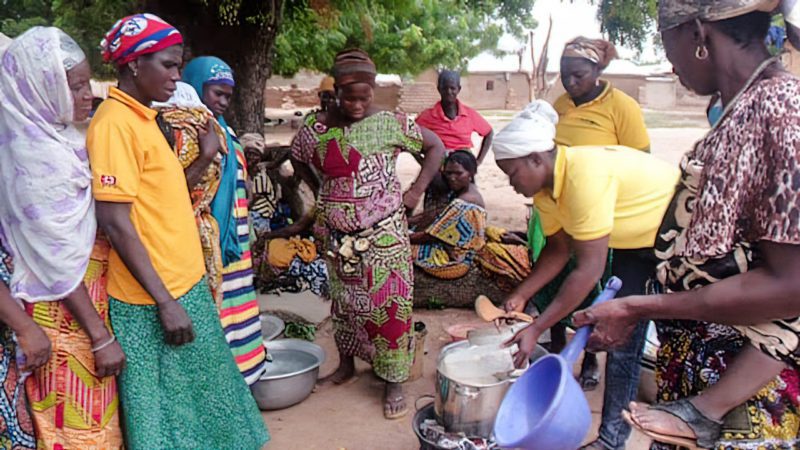
Women training women – near Wa in rural Ghana. In partnership with the Mennonite Economic Development Assoc’n; Photo Credit MEDA, 2017
Affordable means foods with complete protein for one cent or less per gram of protein. These prices can be achieved, for example, with hyper-local processing of soybeans to produce high quality, tasty foods of various types, using the SoyaKit.
“Soymilk is an excellent source of protein…it’s a great way to get protein at a relatively low cost… that otherwise would not be available,” asserts Dr. Jeff Wilkinson of Duke’s Global Health Institute. Affordability can only be achieved with minimal/no packaging, no refrigeration and minimal transport (walking, bicycle and perhaps motorbike); the foods are made primarily for same-day consumption within the neighbourhood. These affordable prices also allow a reasonable profit for local women entrepreneurs, as has been shown with the $200 SoyaKit platform in four countries – Kenya, Ghana, DR Congo and Malawi. The human consumption of soyfoods also has a beneficial climate impact. As liquid food, the soy foods produced also lend themselves readily to the addition of bulk micro-nutrient pre-mixes at the cost of about ? cent per dose – again much more affordable than other micro-nutrient offerings such as Sprinkles.
To continue lowering rates of under-nutrition, hyper-local processing is needed to make affordable nutrient-dense food available within every neighbourhood, while benefiting local women entrepreneurs to improve local economic and social conditions.
Other means of providing locally available protein, such as aquaculture, larva growing, and algae cultivation are possible; these solutions typically require specialized environments or considerable infrastructure that prevent them from being widely implemented. The fuel-efficient, time-efficient local production of soy foods, as enabled by the non-electric SoyaKit, decreases work hours, smoke inhaled, and fuel consumed. The advantages of a soyfood-based micro-enterprise platform as the core of a cross-sectoral solution are:
The most highly-scaled instance of a SoyaKit deployment is as part of the AgDiv project in Malawi, funded by USAID through its Feed the Future initiative and implemented by Palladium International with local partners Catholic Relief Services, the Centre for Youth Empowerment and Civic Education (CYECE), and Women Legal Resource Centre (WOLREC). Starting in 2018, over 5,000 women have now been equipped with SoyaKit technology and are producing 600,000 liters of soymilk, the protein equivalent of 3.5M eggs per month, benefiting 250,000 consumers daily in rural Malawi with affordable protein-rich foods (see reference 4). An example of these women entrepreneurs is Alice Butao, who initially made only $10 profit per month. With the help of peer-to-peer networking and the guidance of a local ‘champion mentor’, Alice has been able to improve her profit to $90 per month. The vast majority of these women have paid about $US 80 for their equipment, primarily out of profits earned from the sale of soy foods, showing that such projects can approach commercial viability.
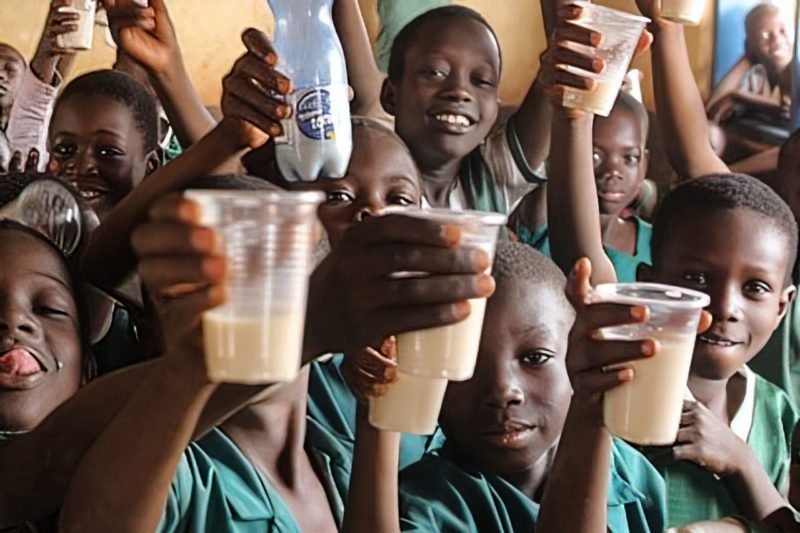
Student customers enjoying their fresh soymilk, Tamale, Ghana; Photo Credit Savannah Agricultural Research Institute, 2017
The SoyaKit solution should be viewed as a component of a community improvement initiative, which focuses on any or all of nutrition, women, and local economic improvement. The nutrition component can be enhanced with complementary initiatives, including micro-nutrient pre-mixes, garden greens, etc. It can also be extended to include better soybean cultivation practices, access to low-cost farming inputs, etc. The women empowerment component can be extended with additional financial literacy and tools, other business skills, community dialogues, and community leadership training. Economic development can be enhanced through the use of savings via the VS&L clubs, whereby loans can be made to community members to help start additional businesses. Field experience has shown that a women-empowered initiative can cost-effectively reduce chronic malnutrition and produce social and economic benefits for local communities.
For more information about the SoyaKit and Malnutrition Matters, visit www.malnutrition.org .
Related Content
Comments
Deep Dives

Featuring
Clarisse Awamengwi
IE Correspondent
July 17 - 12:00 PM EST

Featuring
Russell McLeod
July 24 - 12:00 PM EST
RECENT
Editor's Picks
Webinars
News & Events
Subscribe to our newsletter to receive updates about new Magazine content and upcoming webinars, deep dives, and events.
Become a Premium Member to access the full library of webinars and deep dives, exclusive membership portal, member directory, message board, and curated live chats.
At Impact Entrepreneur, we champion fearless, independent journalism and education, spotlighting the inspiring changemakers building the Impact Economy. Diversity, equity, sustainability, and democracy face unprecedented threats from misinformation, powerful interests, and systemic inequities.
We believe a sustainable and equitable future is possible—but we can't achieve it without your help. Our independent voice depends entirely on support from changemakers like you.
Please step up today. Your donation—no matter the size—ensures we continue delivering impactful journalism and education that push boundaries and hold power accountable.
Join us in protecting what truly matters. It only takes a minute to make a real difference.
0 Comments